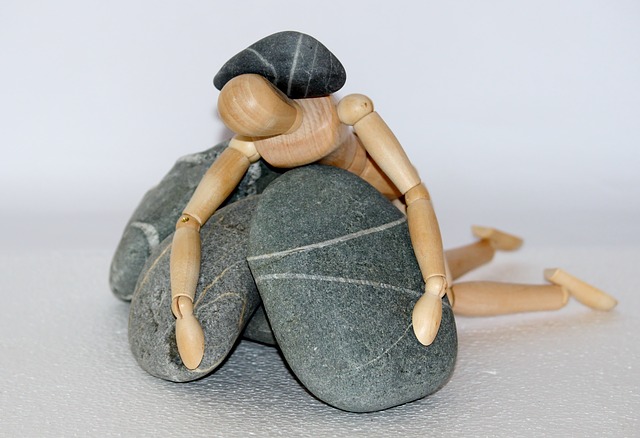Artificial sunlight, used since the 80s to treat seasonal depression, hasn’t finished revealing the extent of its therapeutic potential. It is a real natural medicine! Its efficiency extends to treating jet lag, stress, sleep problems, cognitive problems, and even bulimia…
Paradoxically, the discovery of the anti-depressant properties of light comes from a patient suffering from recurring depression who, in 1984, permitted Dr. Norman Rosenthal to bring to light the existence of “Seasonal Affective Disorder” (SAD). Since then, there has been unceasing research that explores the therapeutic possibilities of phototherapy (or light therapy).
- The blues or depression ? Be careful, because one needs to distinguish between “Seasonal Affective Disorder” and the frequent bouts of ‘the blues’ that accompanies the decrease in temperatures and sunlight. Let us say that SAD is to ‘the winter blues’ as depression is to ‘feeling down.’ It has four diagnostic criteria: major recurrent episodes of depression, which appear in autumn or winter and disappear at springtime or in the summer, during at least two consecutive years; the absence of other psychiatric disorders, or any other psychosocial factors. It is primarily characterized by intense asthenia, a sad mood, and anxiousness and irritability. It is also accompanied with atypical symptoms: hypersomnia, bulimia linked with sugar addiction, weight gain. The sleep, which is increased by an average of 18%, is of poor quality. Those suffering from this disorder have a hard time getting up and are drowsy during the day. This pathology, which arises at the beginning of adulthood, essentially affects women (4 cases out of 5) and its prevalence increases with the latitude. It is estimated that it affects 4 to 5% of the general population. ‘The winter blues,’ the benign form of SAD, affects more than 25% of the population living higher than 40 degrees north! Considered a “seasonal mood,” it is widespread in the Nordic countries; however, one can also find Bright Light Cafés where the depressed go to absorb their daily dose of light.
Far from being a gadget, artificial light is a recognized medical treatment, employed for years in hospitals. Since 1984, the parameters of phototherapy have been refined with the end of optimizing its therapeutic efficiency and coming to a better understanding of its mechanisms of action. If we know that the reduction of natural light during winter is the origin of seasonal troubles, paradoxically, phototherapy doesn’t act by increasing the amount of time in the light: the sessions should take place after sunrise and should have a limited duration (30 minutes can suffice). The efficiency of artificial sunlight rests, in fact, on its capacity to regulate certain chronobiological disorders, in particular the circadian rhythms of temperature and some hormonal secretions: cortisol, TSH, and melatonin. Melatonin is a hormone that is secreted by the pineal gland when it is dark out; its synthesis is blocked by exposure to light. So, the duration of melatonin secretion is inversely proportional to the length of the day. But with SAD patients, it is much more desynchronized.
- A natural stress reliever This regulating capacity of artificial sunlight explains, by the way, its agency in treating sleep problems caused by disruption in the normal cycle (going to sleep too early or late). By setting the internal clock back on time, phototherapy consequently improves the quality of sleep, as it improves wakefulness during the day. A study done in 2003 at a British retirement home showed another property of artificial sunlight: as well as getting better sleep, the residents who were treated saw their cognitive troubles abated.
New uses for phototherapy may see the light. A recent study showed that it has a revitalizing and stress-relieving effect: in the workplace, especially, the repeated exposure to intense light improves the quality of life, increases vigilance and vitality, while relieving stress. Researchers also perceived that light therapy induces weight loss: two hours of exposure is the equivalent to one hour of exercise! This indicates that artificial sunlight regulates energy in the same way as physical activity. A recent Japanese study suggests that it could be useful in the treatment of bulimia.
Whether treating serious or benign disorders, phototherapy doesn’t seem to bring anything but benefits. One hundred percent natural, it has no side effects: the lamps are equipped with anti-UV filters. However, use is discouraged in the case of ophthalmologic problems (cataracts or retinal degeneration).
Mode of Use
- Expose one’s face for 30 minutes to 2 hours, preferably in the morning after getting up: it is the most receptive time for the retina.
- From the fourth day on, the benefits will make themselves felt. The biological clock will regulate itself. The seasonal troubles will disappear in a few weeks.
Phototherapy could enter into the regular hygiene of life, thanks to the office lamps or dawn simulators that one can find in businesses. This way of ‘waking up’ which simulates the rising and setting of the sun regulates the biological rhythms the quality of sleep. Thus it is a therapeutic apparatus which contributes to the physical and psychological health alike.
En aucun cas les informations et conseils proposés sur le site Soignez-vous ! ne sont susceptibles de se substituer à une consultation ou un diagnostic formulé par un médecin ou un professionnel de santé, seuls en mesure d’évaluer adéquatement votre état de santé


